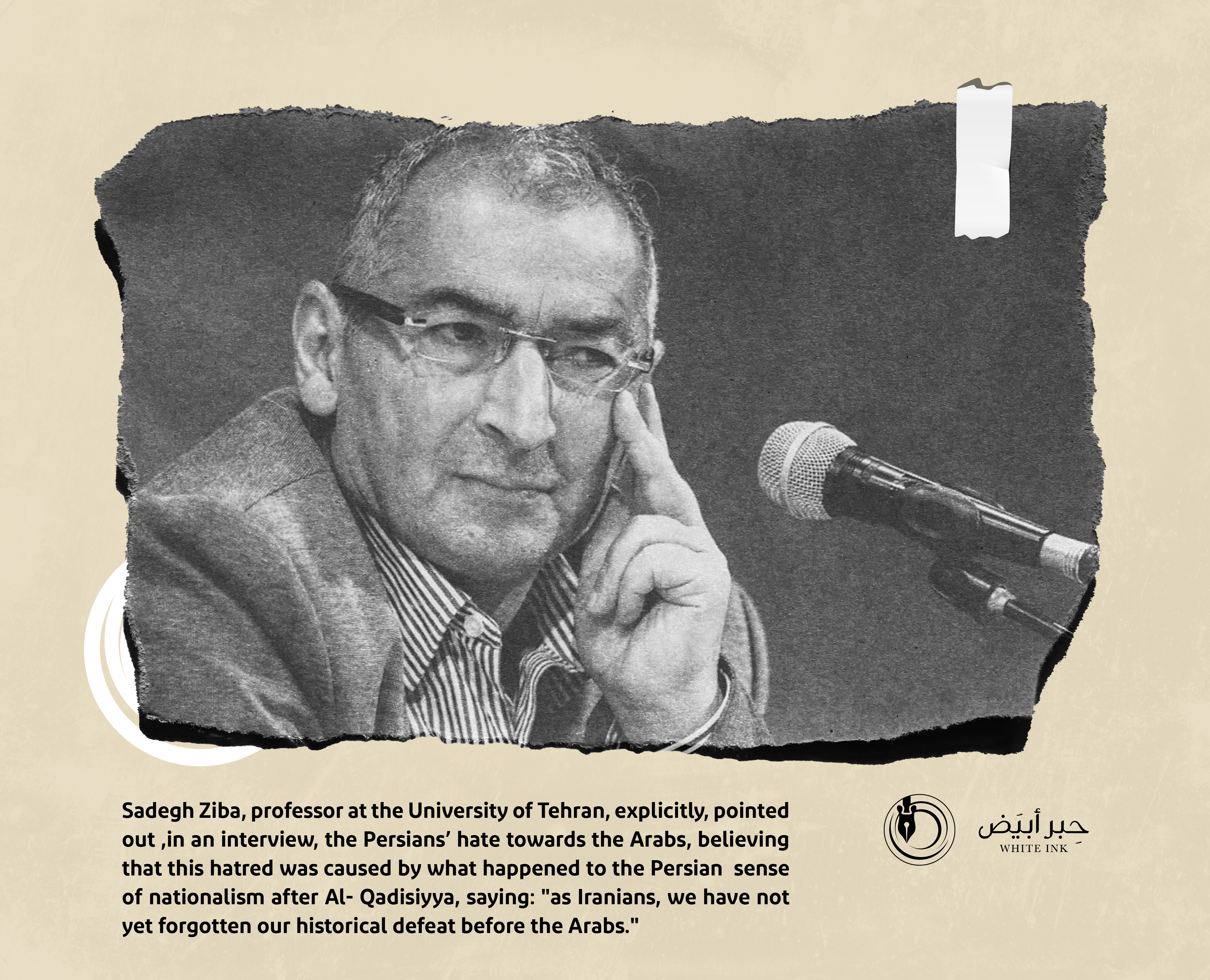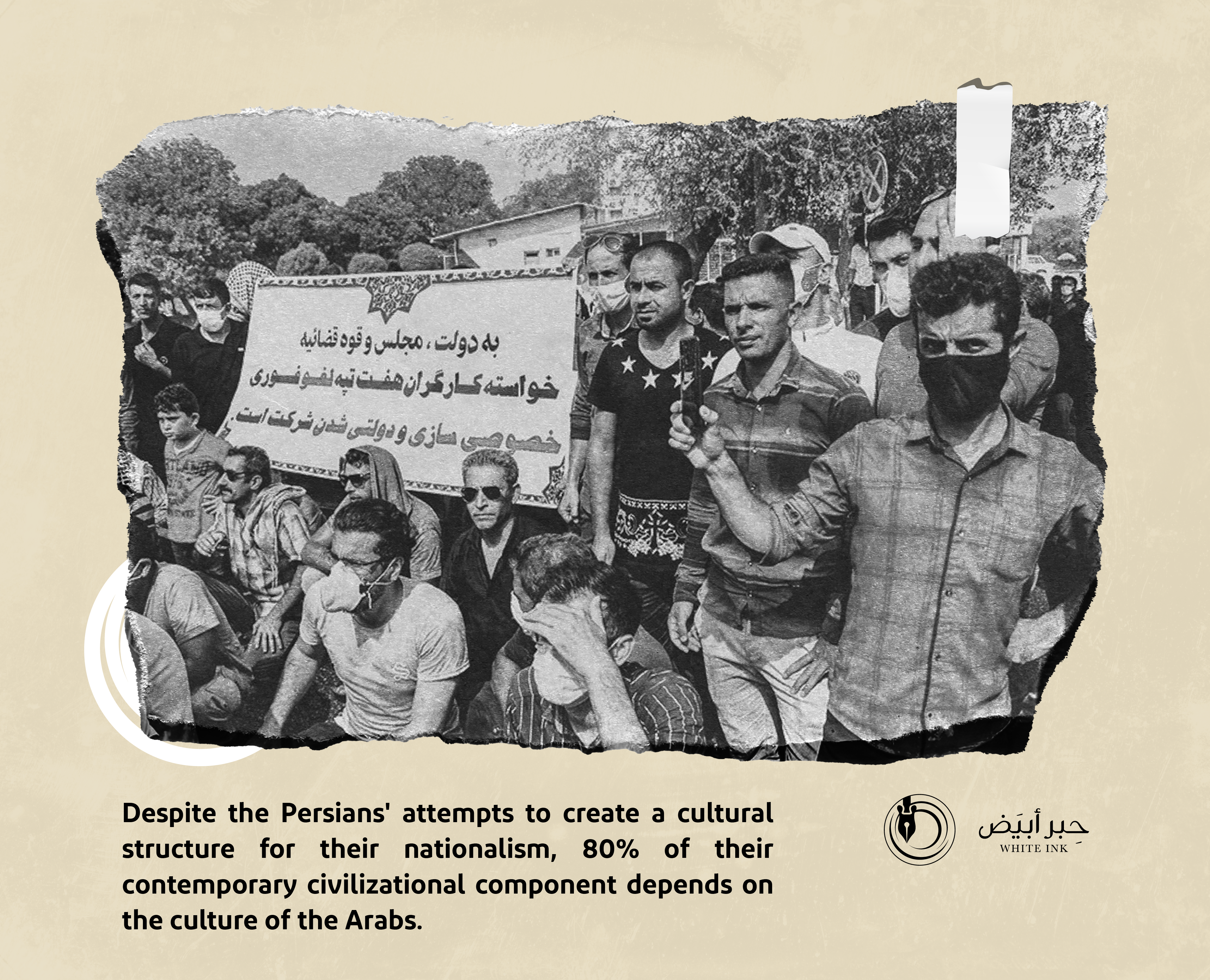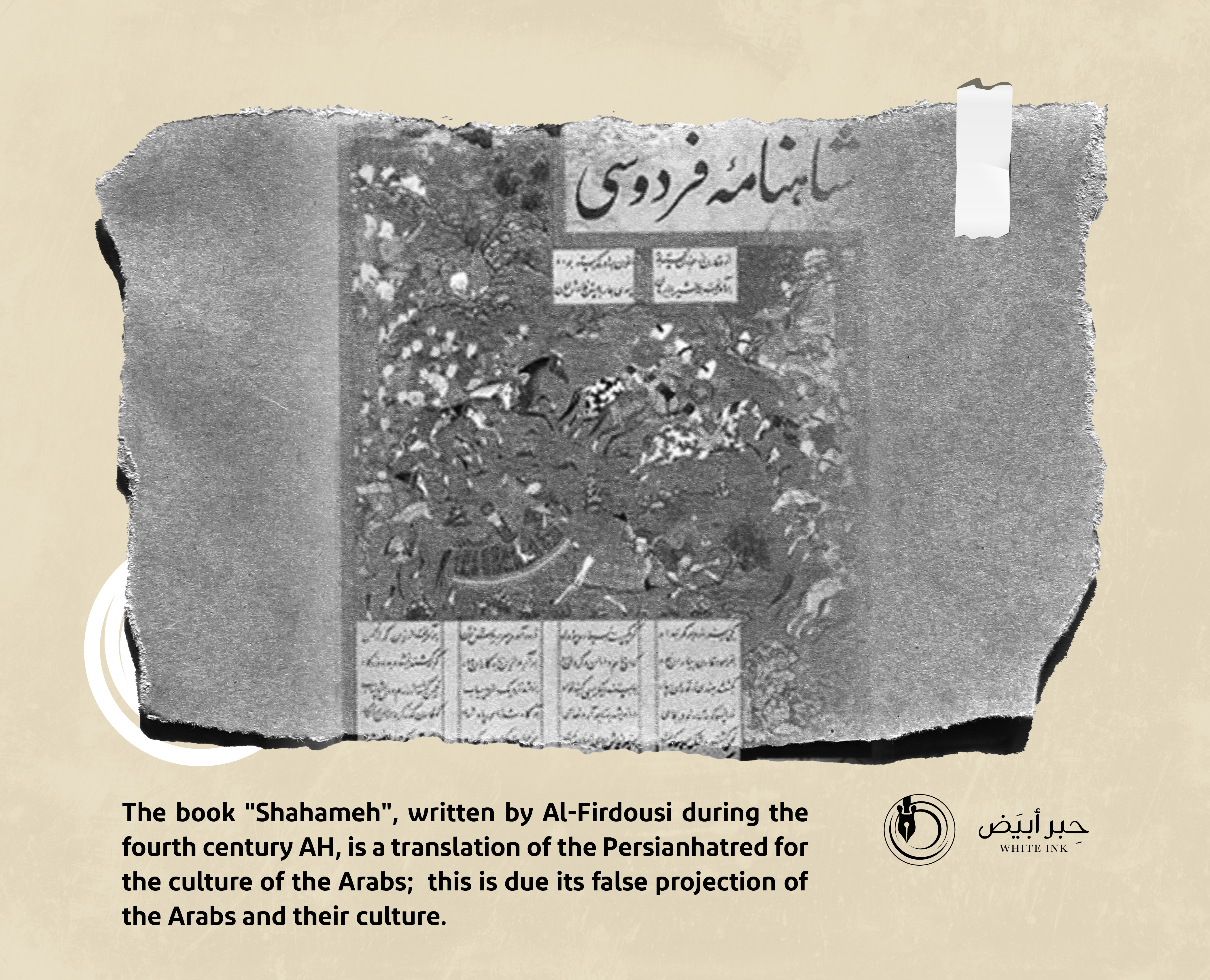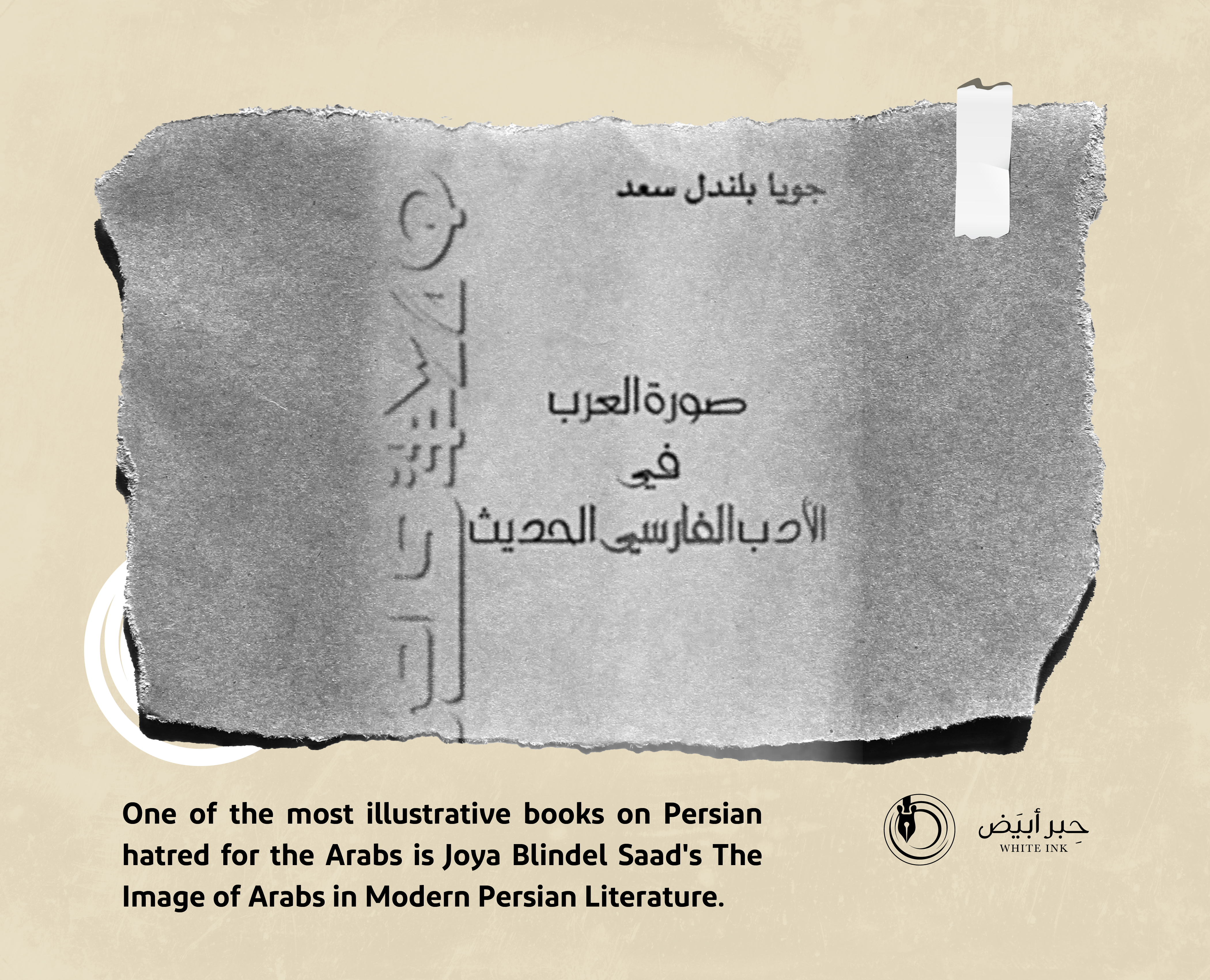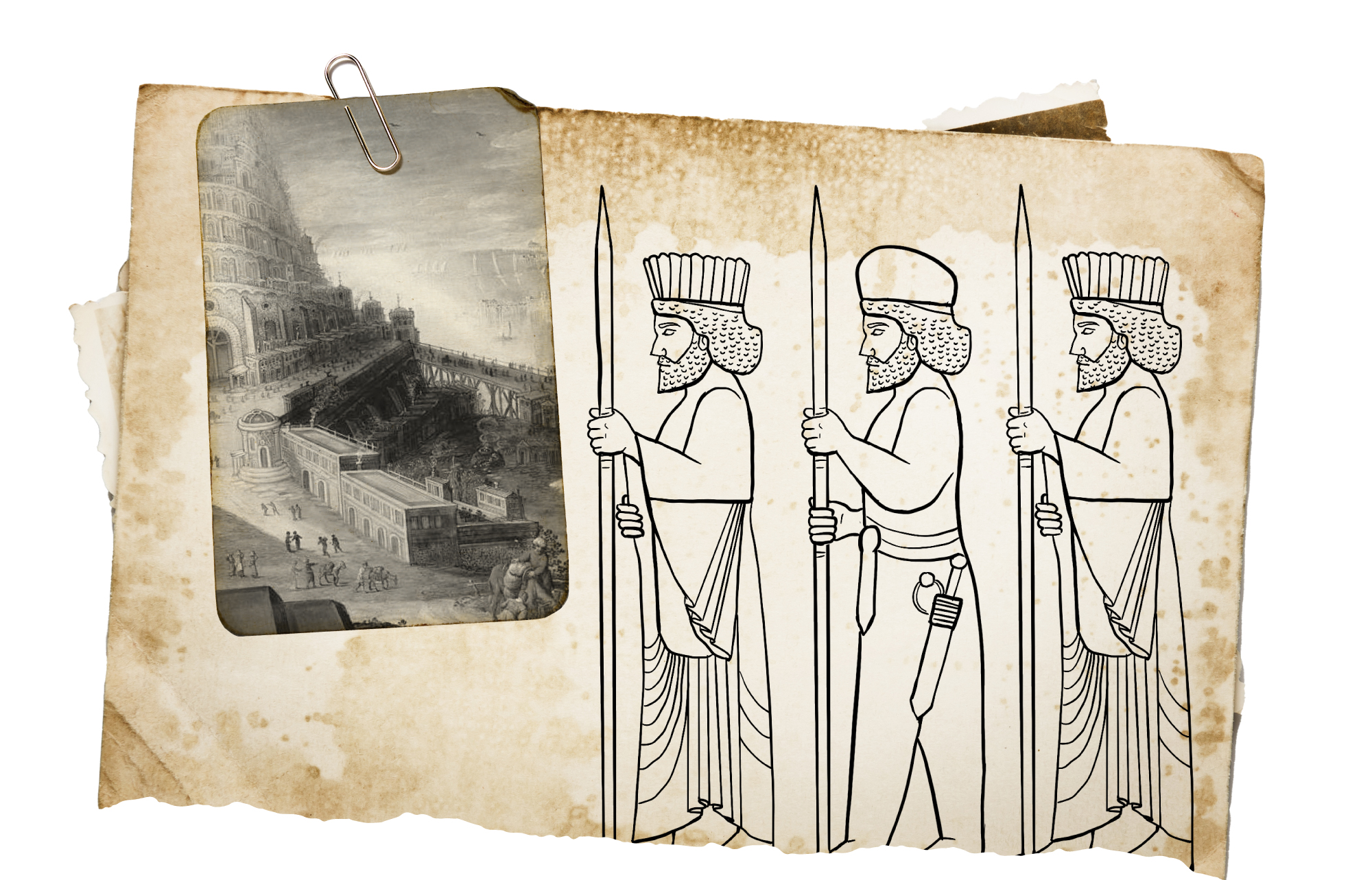
According to a general collective thought
The Persians and their kings expressed their strong hatred for the Arabs in their ancient history
Relations between the Persians and the Arabs were not good at most times throughout history until the advent of the Prophet Muhammad, peace be upon him. Relations were often very tense as a result of the Persians’ desire to dominate the Arabs, which the Arabs rejected with their pride and resistance, and the Arab sees that his dignity is represented in his sword.
The Persians and their kings were characterized by arrogance, pride, and contempt for others. The Persians justify this arrogance by their affiliation with the Aryan race. It is said that the name of Iran is derived from the word “Aryan”. Historians have noticed this phenomenon and pointed out to the pride of the Persian kings in their descent. They refer in particular to the King Dara inscription in Istakhr where the king says: “I am Dara, the great king, and king of the lands inhabited by all peoples. I am a Persian, the son of a Persian, and I am of Aryan descent”.
The Persian kings view other peoples as slaves of the Persians. This view is summed up by King Dara in the aforementioned inscription saying: “These are the lands that I own other than Persia that I control. They paid the tribute to me and did what I commanded and my law is obeyed there”. The inscription mentions many countries, but what concerns us here is that it also mentioned: “Babylon, Assyria, Arabia and Egypt”. The kings of Persia viewed the peoples around them as not belonging to them, but rather as subordinate to them.
From this point, the Persians, and specifically their kings, formed a stereotyped image of the Arabs. Khosrau’s speech before the delegations of nations and peoples who came to visit his court is a good example of this, as Khosrau expressed his strong hatred for the Arabs, displaying the stereotyped image of them in the Persian collective thought. He said: “I do not see that the Arabs have any good qualities in matters of religion and worldly matters. They are not strong and do not have a decisive character. Which indicates their humiliation and their weakness is their place of residence (meaning the desert) with bewildered beasts and birds. They kill their children out of poverty and kill each other out of need. They do not know anything about the food, clothes, drinks, amusement and pleasure of this world. The best food which their master ever had was camel meat, which many wild beasts do not like”. Thus, Khosrau’s speech came out expressing the stereotyped image in the mind of the Persians towards the Arabs and the superiority of the Persian Aryan race over the Arab Semitic race.
In fact, his speech was not the unique model of the Arab stereotyped image in the Persian collective thought, as the story of King Bahram is another example related to that. The senior men of the Persian court rejected Bahram’s accession to the throne after the death of his father, Yazdegerd, on pretexts that were all hostile to the Arabs, humiliating them, and expressing the view of the Persian court towards the Arabs. Bahram had been raised in Al-Hira palace with the sons of Arabs and learned their language and customs. The men of the court said in great bravado that Bahram did not deserve the throne of Khosrau because: “He did not have the morals and character of the Persians, but he got the character of the Arabs because of his upbringing among them”.
The Persians hated their king, Bahram Ibn Yazdegerd, because he was raised in the court of Al-Hira.

The story of Al-Harith Ibn Kalada is another story that confirms what we mentioned earlier about the stereotyped image of the Arabs and the contempt of the Persians for them. Al-Harith was an Arab physician who came to the court of Khosrau to treat the king. Khosrau looked at the man’s clothes with contempt and asked him: Are you Arabian? The man replied proudly saying: Yes, I am an Arab man wholeheartedly. Khosrau wondered, saying: With their ignorance, weak minds, and poor food, what will the Arabs achieve with a physician!
Thus, the previous examples explain the nature of the bad stereotyped image that the Persians drew of the Arabs as ignorant, without religion or civilization, and that they are the desert dwellers in contrast to the city-dwellers of the Persian Aryans. The Persian kings remained convinced of their illusions until they were surprised by the Arab and Islamic conquests that overthrew the throne of Khosrau and brought Persia to a major civilized stage.


- Hussein Mujib Al-Masri, Relationships between Arabs, Persians and Turks (Cairo: Al-Dar-Althakafia Publishing, 2001).
- Khaled Al-Douri, The Arab Resistance to the Sassanid Influence in Al-Hira from 226AD to the Battle of Dhi Qar, Unpublished Master’s Thesis, College of Education, Tikrit University (2003).
- Raif Khoury, With the Arabs in History and Legend (Cairo: Hindawi Foundation, 2019).
- Abd Al-Wahhab Azzam, The Links between Arabs and Persians and Their literature in Pre-Islamic Times and Islam (Cairo: Hindawi Foundation, 2012).
- Gustave Le Bon, The Civilization of the Arabs, translated by: Adel Zuaiter (Cairo: Hindawi Foundation, 2013).
- Muhammad Gad and others, The Days of the Arabs in the Pre-Islamic Period (Cairo: House of Revival of Arab Books, 1942).
- Homa Katouzian, The Persians: Iran in the Ancient, Medieval and Modern Times, translated by: Ahmed Hassan Al-Ma’ini (Beirut: Dar Jadawel, 2014).
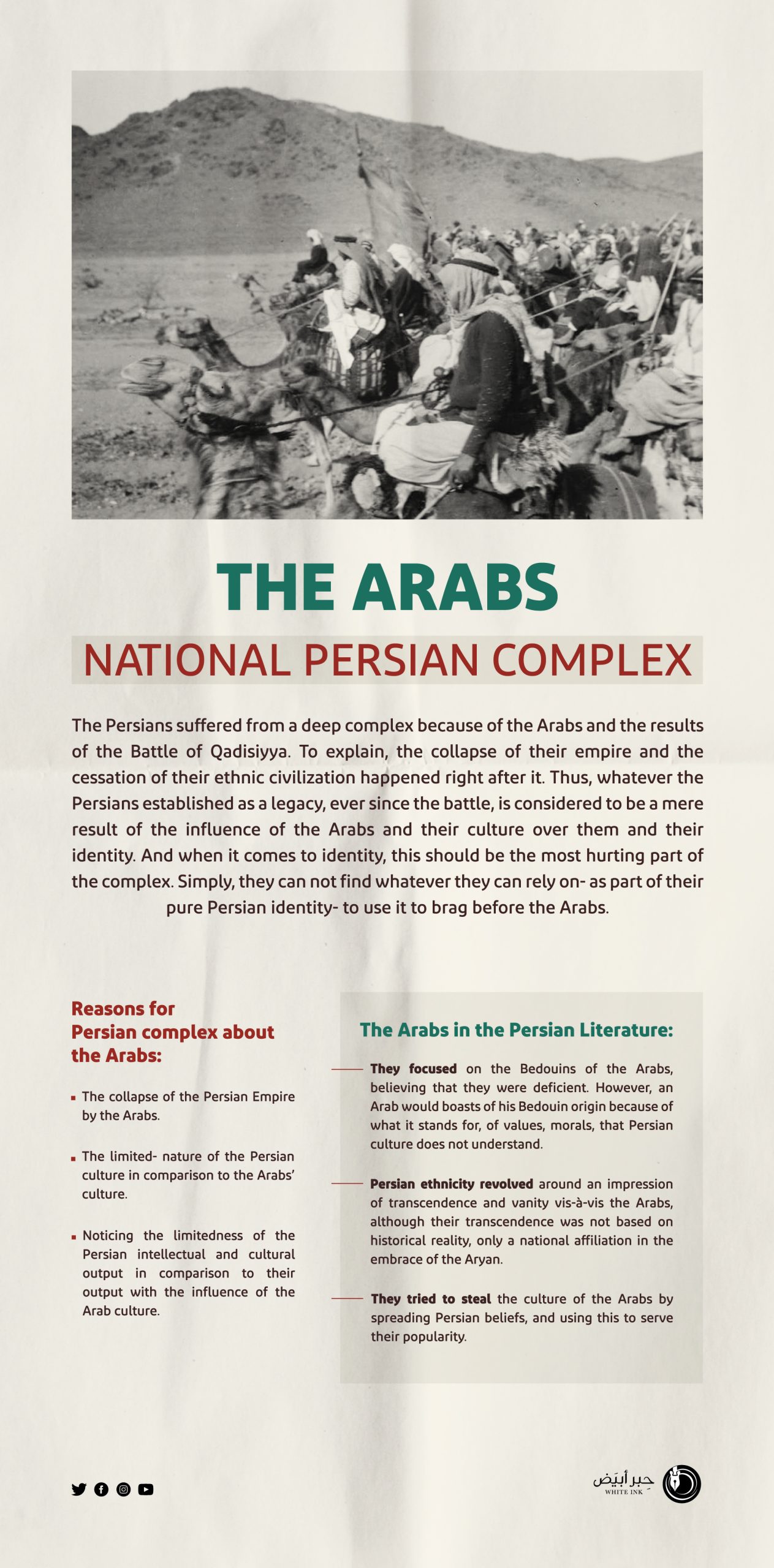
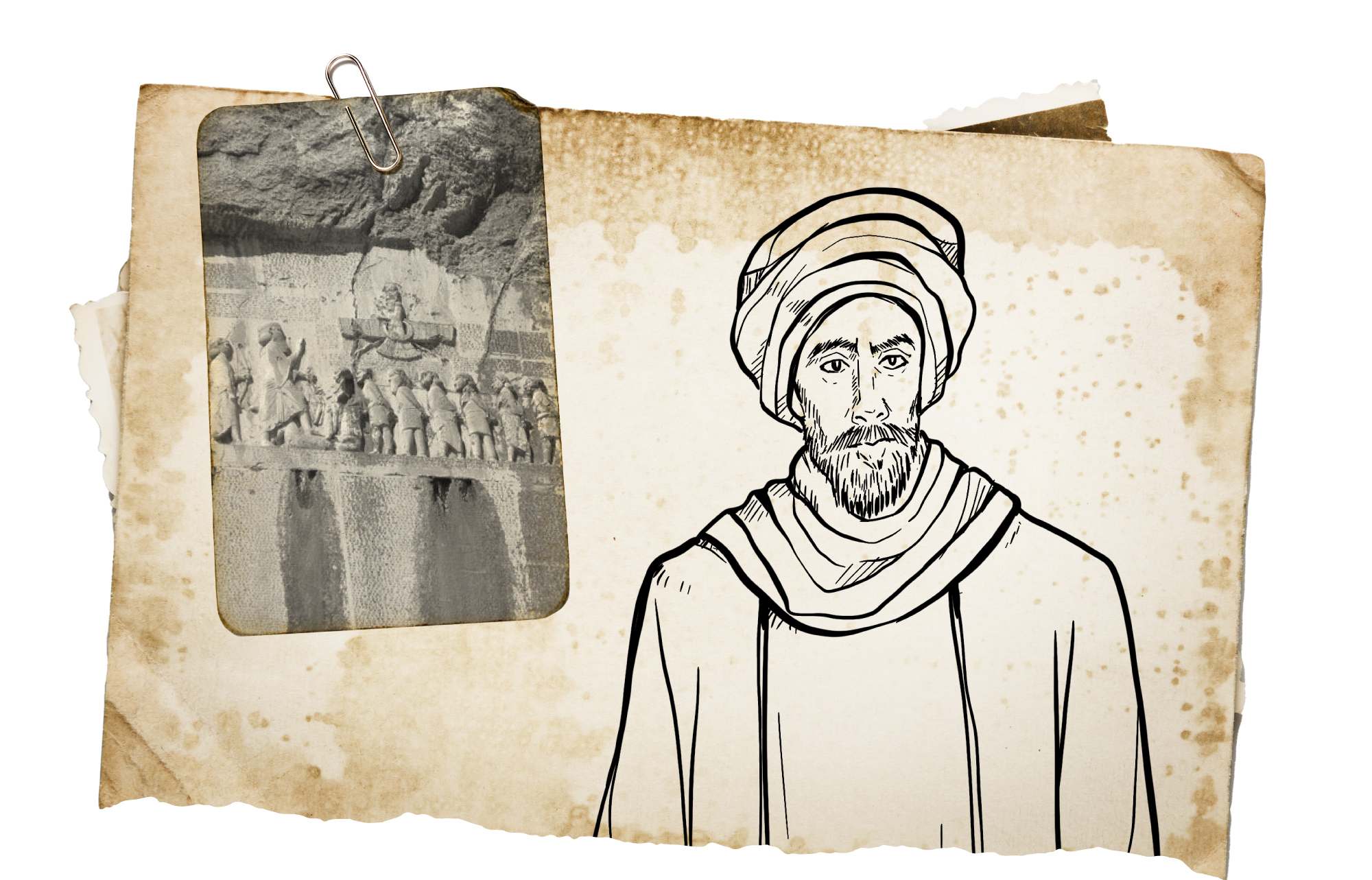
In it, they put the Arabs in the second place
The Persians introduced sectarianism into Islam after they used it to serve their ethnic depth
Researching the backgrounds of Persian ethnic hatred against the Arabs does not make them easy to understand if they are linked to specific time contexts without linking them to the phenomenon since its formation. However, the missing link in the research remains linked to the origin of the story and the starting point that accumulated Persian ethnic hatred against other races in general and Arabs in particular.
It can be said that observing the first signs of the problem has mixed between truth and myth, especially in the pre-Islamic period. Linking the origins of Persian-Arab enmity with the legend of King Al-Dahhak remains somewhat difficult despite the efforts of some to find connections between the first Arab-Persian confrontations and what resulted from that long history of nationalities clash that continues to this day.
On the other hand, the Muslims’ motives for conquest of Persia were not ethnic or expansionist, but rather stemmed from a purely divine mandate by calling all people to worship Allah alone. Even after subjugating Persia to the Islamic rule, Islam rejected ethnic and tribal fanaticism and imposed absolute equality in rights and duties, which made the Persians integrate into the Islamic society and even fight alongside the Arabs.
While many residents of Persia were convinced of Islam and worked hard to support it and spread its message, some of them, especially those close to the authorities and the beneficiaries of power, tried to distort the message of Islam. They described the matter as an ethnic conspiracy aimed at revenge against the Persian race and the eradication of Zoroastrian civilization, if it is permissible to say that it was a civilization in the anthropological and valuable concept of the term.
In this context, the Persians established a belief that they belong to the Aryan race, which brings them together with the Indians and Germans, and that the name of Iran is derived from the word “Aryan”. Therefore, the Persians deal with others arrogantly, especially in their dealings with the Arabs and their Arab-Islamic history and civilization. They consider the Arabs to be savage and bloodthirsty Bedouins.
This racial ethnic-structure formed the nature of the main and functional personality of the Persians (in Ralph Linton’s words). They considered the unity of race more important than the unity of religion and homeland. This is what made them not hesitate to slaughter the Ahwazi Arabs or the Kurds, but rather treat those of the same sect from the Arabs today as a second-class sect. Although the cradle of Shiism was in Iraq, the Persians adapted it to serve an ethnic creed that has nothing to do with religion and has no place for the Arab world in it.
Some attribute the Persians’ hatred of Arabs to the belief that the Arabs undermined the Persian Zoroastrian civilization and spread Islam. There are Persians who hate Islam and consider it an Arab religion that calls for persecution, and they associate their backwardness and the distortion of their language and Persian history with Arabs and Islam. Therefore, some Persians called for the removal of Arabic words from their Persian language and a return to the Aryan (Persian-Indian) culture.
The mixing of the Persians with the Arabs, and even their fighting alongside the Arabs, did not make them forget their ethnic origins and their nostalgia for Zoroastrianism. Therefore, the Persians greatly admired Abu Muslim Al-Khurasani and believed that he did not die, but went and would return at the end of time. Some of them said that he was a prophet sent by Zoroaster.
The Persians’ hatred of Arabs did not stop at historical hatred and ethnic behavior, but rather turned into an ideology that is taught in Persian schools and religious places and has been enshrined in Persian writings and literature. Perhaps an abstract look at the poetry and prose of the Persian literature before and after Islam reveals that it is filled with hatred for the Arabs, as their young are brought up on that. The largest poetic epic in the Persian literature is the epic of The Shahnameh written in the fourth century AH by Abu Qasim Al-Ferdowsi. It consists of sixty thousand verses. Al-Ferdowsi is one of the leaders of the populist movement. The strange thing is that he is a Muslim, but his fanaticism made him ignore his religion when he praised Khosrau for killing the great companion Abdullah ibn Hudhafah as-Sahmi, may Allah be pleased with him. Al-Ferdowsi defamed the Arabs severely in those verses.
When the Persians understood the difficulty of confronting Arabs outside the Islamic system, they thought about the necessity of penetrating the creed by exploiting the major sedition incidents, so they introduced sectarianism and adapted it to serve their ethnic depth.
In general, it can be said that the Persian hatred against the Arabs did not subside with the attempts of Islam to erase ethnic fanaticism, nor with the Arabs’ attempts to integrate the Persian component. The penetration was in the name of sectarianism through the distortion of the religious heritage to enable and give power to the Persian race in light of the failure of a large part of the Arabs to understand the nature of the trap set by the early Persians and their followers from the Safavids of Qom.
Many Arabs failed to understand the nature of the trap set by the early Persians and their followers from the Safavids of Qom.



- Hussein Mujib Al-Masri, Relationships between Arabs, Persians and Turks (Cairo: Al-Dar-Althakafia Publishing, 2001).
- Khaled Al-Douri, The Arab Resistance to the Sassanid Influence in Al-Hira from 226AD to the Battle of Dhi Qar, Unpublished Master’s Thesis, College of Education, Tikrit University (2003).
- Raif Khoury, With the Arabs in History and Legend (Cairo: Hindawi Foundation, 2019).
- Abd Al-Wahhab Azzam, The Links between Arabs and Persians and Their literature in Pre-Islamic Times and Islam (Cairo: Hindawi Foundation, 2012).
- Gustave Le Bon, The Civilization of the Arabs, translated by: Adel Zuaiter (Cairo: Hindawi Foundation, 2013).
- Homa Katouzian, The Persians: Iran in the Ancient, Medieval and Modern Times, translated by: Ahmed Hassan Al-Ma’ini (Beirut: Dar Jadawel, 2014).
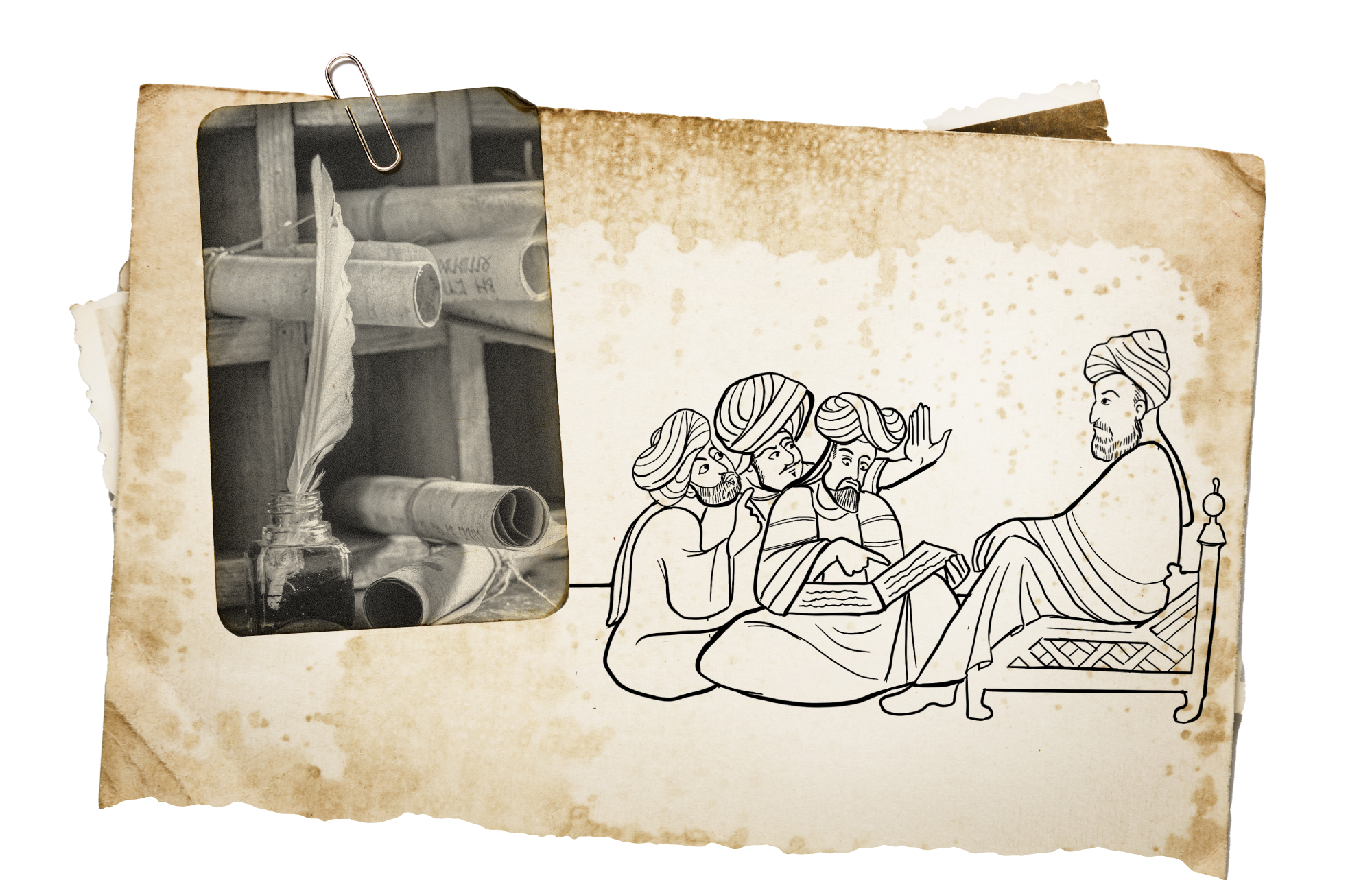
Although their language is 80% based on Arabic
The Persians portray the Arabs badly in their literature
The Persians were destined to be the Arabs’ eastern neighbors, and that was a tense relationship full of doubt on the part of the Arabs who doubted the sincerity of the intentions of the Persians, who had always wanted to attack the Arabs and take over their countries. This is what was achieved before Islam in Iraq and Yemen. Researchers wonder about the Persians’ view of the world with Arab eyes, while it is better for them to see it with eastern eyes, where their ethnic space is located in Afghanistan, India, Uzbekistan and Georgia, especially since the Persians are closer to those races than the Arabs, yet their ambitions are limited to Iraq, the Arabian Gulf and the entire Arab land.
During two interviews with the Iranian newspaper “Sobh Azadi”, the Iranian professor at Tehran University, Sadiq Ziba, said about the Persian Iranians’ view of the Arabs: “We hate the Arabs. Because of them, we curse the Sunnis. We do not forget what they did in the battle of Al-Qadisiyyah”. Referring to the historical reasons for their hatred of the Arabs, Sadiq says: “It seems that we as Iranians have not yet forgotten our historical defeat against the Arabs, and we have not forgotten the Battle of Al-Qadisiyyah after 1400 years. We hide deep hatred towards the Arabs as if it was a fire under the ashes that turns into flames whenever it gets the chance”.
The Iranians treat the Arabs arrogantly, showing their contempt for their customs and way of life, but in fact 80% of the Persian language is of Arab origin. Islam spread in Persia until it dominated Zoroastrianism despite their attempts to keep its ethnic rituals.
The defeat of the Persians in the Battle of Al-Qadisiyyah in 15 AH (636 AD) was a great event in history. The Persians were not only defeated in a battle, but their authority and state collapsed, their identity dissolved, their quarters demolished, and their king was killed. Hence, it was not only a military battle, but a power of a new civilization coming from the depth of the desert, full of human literature spread by Islam, which erased the heresies of Persia. Perhaps what exposed the inherited hatred that many Persians have towards the Arabs is their literature which they adore. They publish poems in their books to pass on to their generations.
Only a few years after the victory of Al-Qadisiyyah, Arab culture, its arts and literature prevailed over Persian thought until the era of the Samanid state (346-450 AH), when the first populist writings were launched that began with the famous “Shahnameh” epic, which represents the main pillar of Iranian culture and its Persian nationalism. These verses are a model of humiliation and hostile poems against the Arabs that Al-Ferdowsi wrote down in his epic:
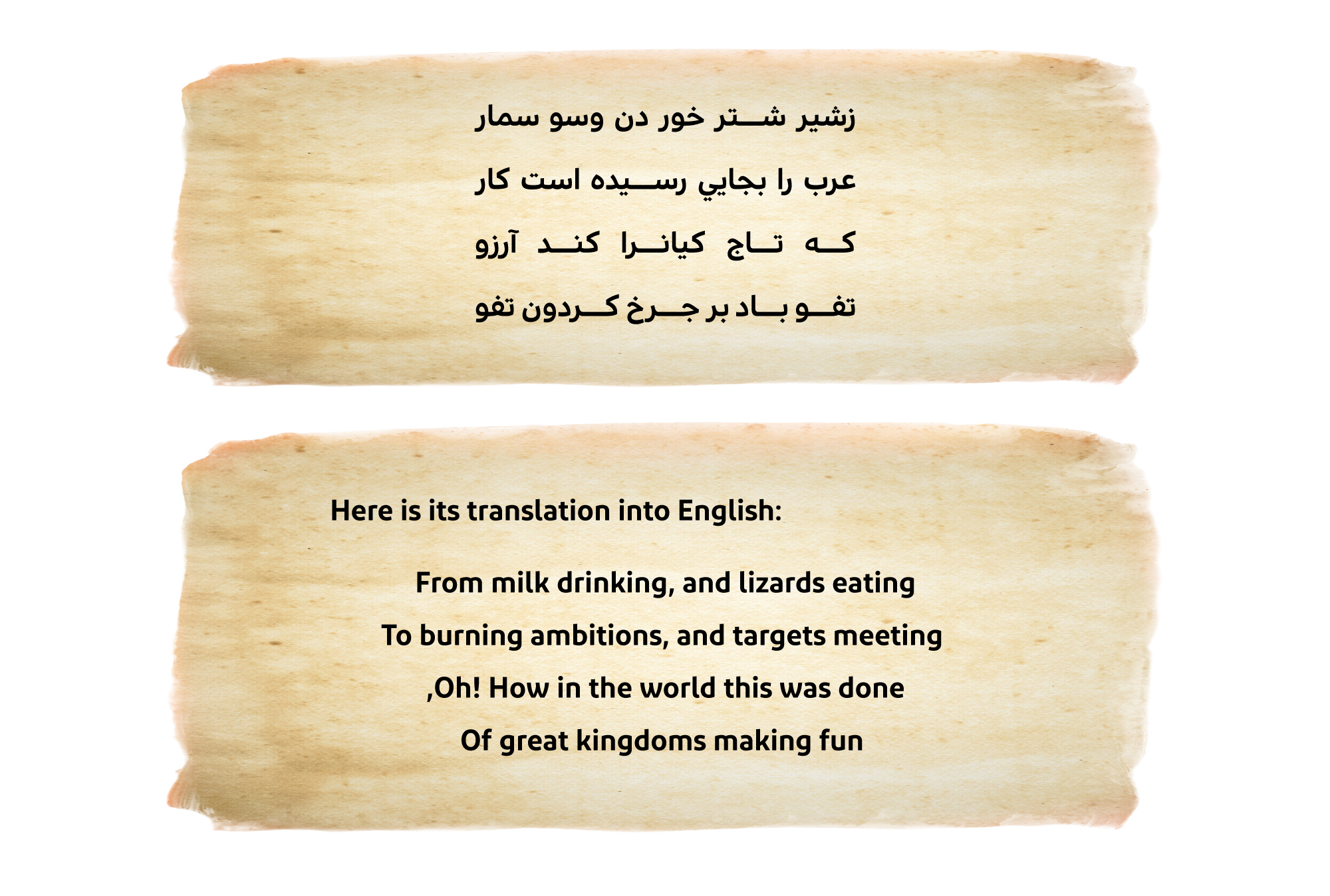
One of those interested in Iranian studies at Umayya Center for Research and Strategic Studies reveals the thorny relationship and its consolidation in the Persian-Iranian mentality, which is clearly spread in school curricula declaring hostility towards the Arabs, saying: “The tracker of the history of Arab-Persian relations confirms a clear fact, which is that these relations were characterized by the spirit of Persian hostility to the Arabs, expansionism at the expense of their lands and countries, and a strong desire that reaches the point of obsession to control them”.
This is evident in the approach of writers in the ancient Persian heritage. The Shahnameh (the famous epic of Al-Ferdowsi) ends with the advent of the Muslim Arabs and the destruction and occupation of the Sassanid state. The Arabs have been portrayed as less civilized than the Persians. Rustam, the commander of the Persian army, sent a message to Saad Ibn Abi Waqqas (the commander of the Arab army) in which he said: “You came with barefoot soldiers, and you did not bring equipment, supplies, or an elephant with you. Because of your drinking of camel’s milk and eating wild beasts, you reached the point of wishing to take the rule of the Persian kings, the owners of crowns. Come to service the king in order to see his wealth and his kingdom. If he smiles, he will endow what is equivalent to everything that all the Arabs own, and this is considered nothing of what he has”.
On this basis, Al-Ferdowsi wrote his epic, which is devoid of any poetic aspect, and called it the Shahnameh (King of Books), making most of it dedicated to insulting the Arabs and glorifying the Persians and their kings. Persian racists taught their children these hostile poems.
In her book “The Image of the Arabs in Modern Persian Literature”, the researcher Joya Blondel believes that Iranian literature has always portrayed the Arabs badly. She chose models to prove this through five Iranian writers: Muhammad Ali Jamalzadeh, a prose and articles writer, Sadiq Hedayat, one of the most famous writers of Iran in the twentieth century, the novelist Sadiq Gupak, and the poets Mehdi Akhavan Sales and Nader Naderpour. On the other hand, she chose three female Persian writers: the poet Forugh Farrokhzad, Tahereh Saffarzadeh and the novelist Simin Danish Fashar.
The researcher found that: “It is clear from the stories and novels that Iranian writers showed a miserable stereotyped image of the Arabs and Islam and blamed the Arabs and Islam for their civilizational backwardness. They make them responsible for destroying the Iranian cultural identity and reject them as outsiders who oppose the true Iranian cultural values. Their vision is based on the metaphysics of the Iranian national model, which speaks of the common origin and the linguistic and ethnic homogeneity versus focusing on ethnic differences with the Arabs”.
What exposes the Persian civilizational backwardness is that their land is devoid of any real architectural heritage that dates back to the Sassanid era before Islam. All that we see of civilizational impact is a fusion between the arts of Arab architecture and the architecture of Central Asia. Contemporary Iranians cannot prove any building belonging to their state, which was destroyed by the first Muslims in the Battle of Al-Qadisiyyah, despite the attempts of contemporary Iranians to prove the sublimity of their race and its superiority over the Arab culture to which they are still captives.
Most of the traces of Persian history in Iran are from the legacy of the Arabs after the battle of Al-Qadisiyyah.



- Joya Blondel, The Image of the Arabs in Modern Persian Literature (Damascus: Cadmus for Publishing and Distribution, 2007).
- Hussein Mujib Al-Masri, Relationships between Arabs, Persians and Turks (Cairo: Al-Dar-Althakafia Publishing, 2001).
- Abd Al-Wahhab Azzam, The Links between Arabs and Persians and Their literature in Pre-Islamic Times and Islam (Cairo: Hindawi Foundation, 2012).
- Nabil Al-Atoum, The Image of Arabs in Iranian School Books (Amman: Umayya Center and Dar Ammar, 2015).


